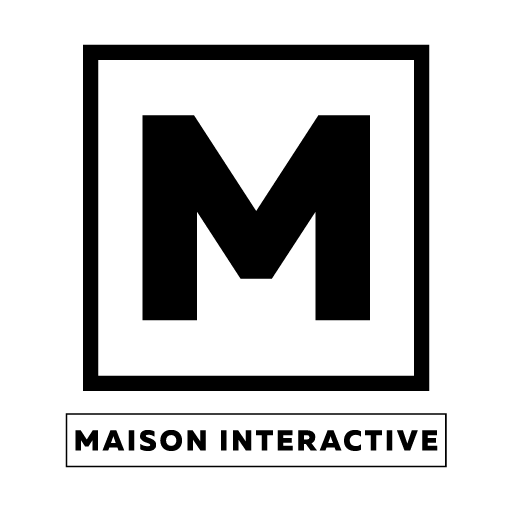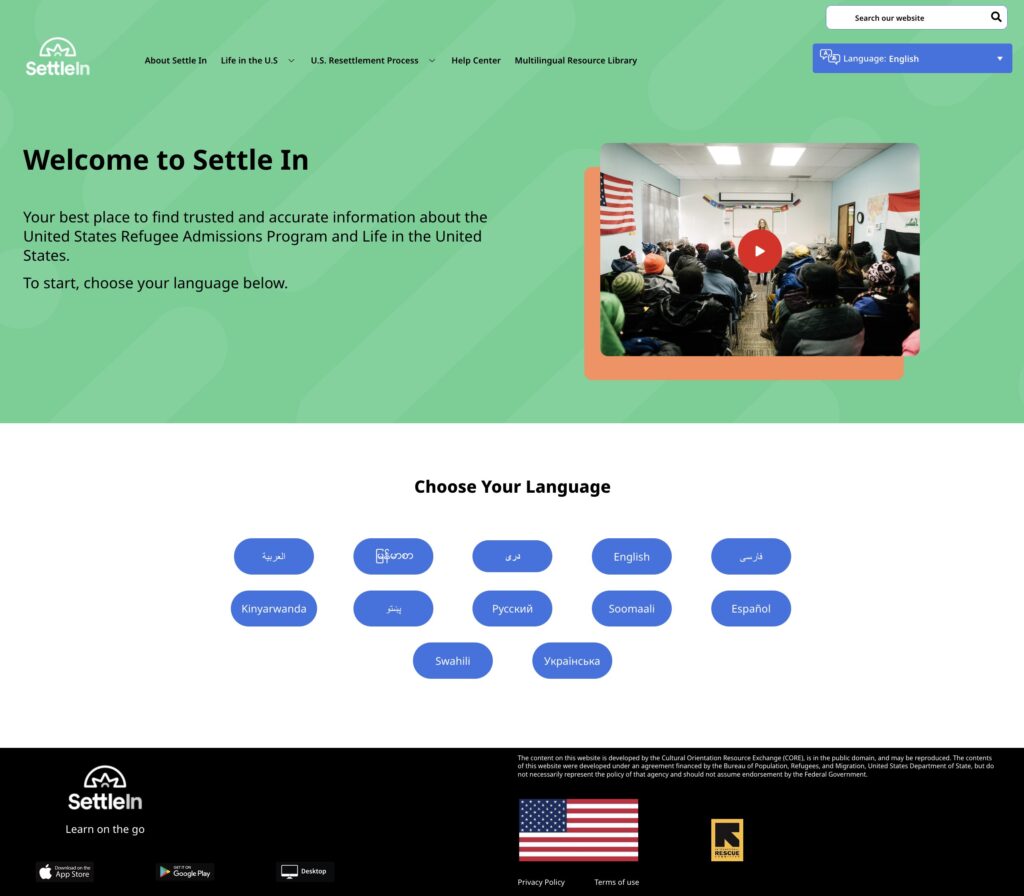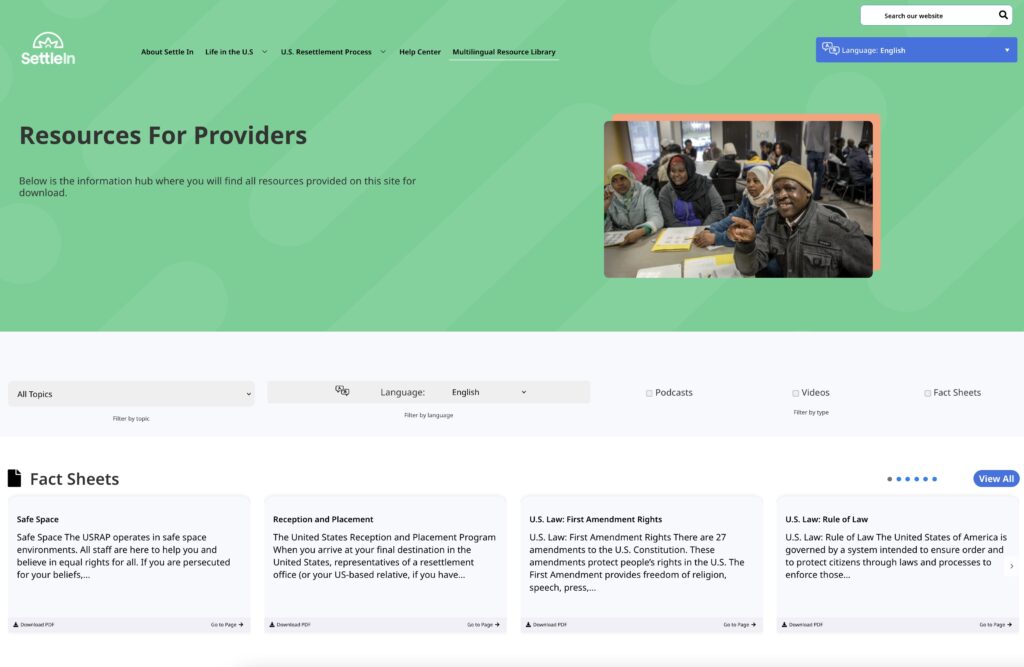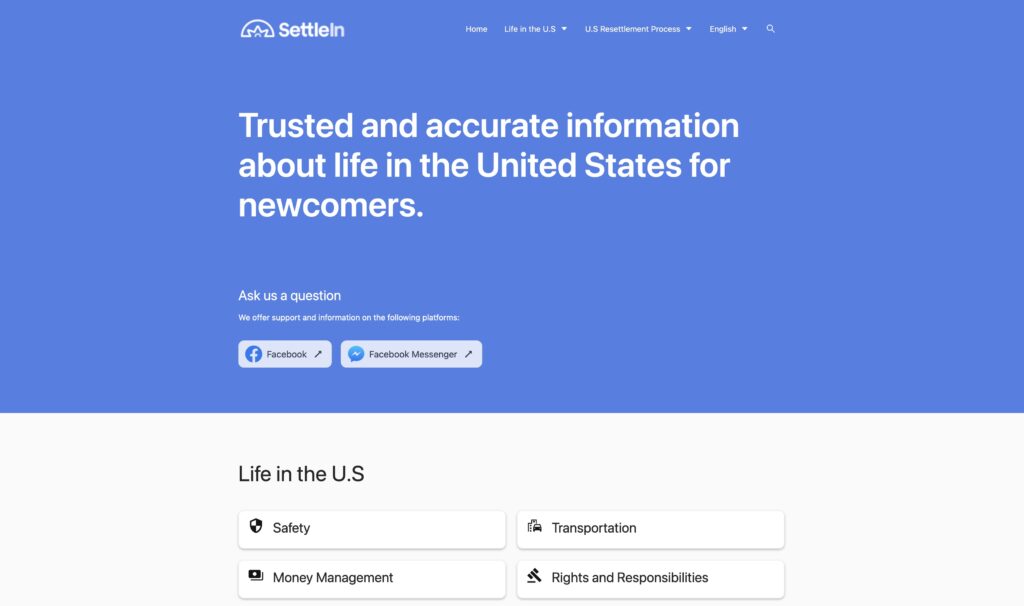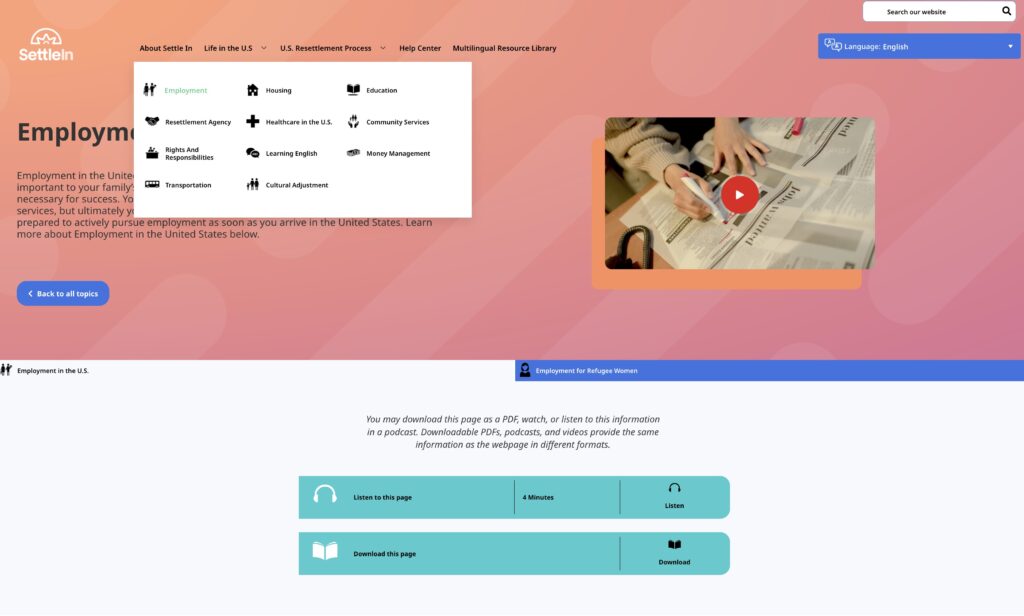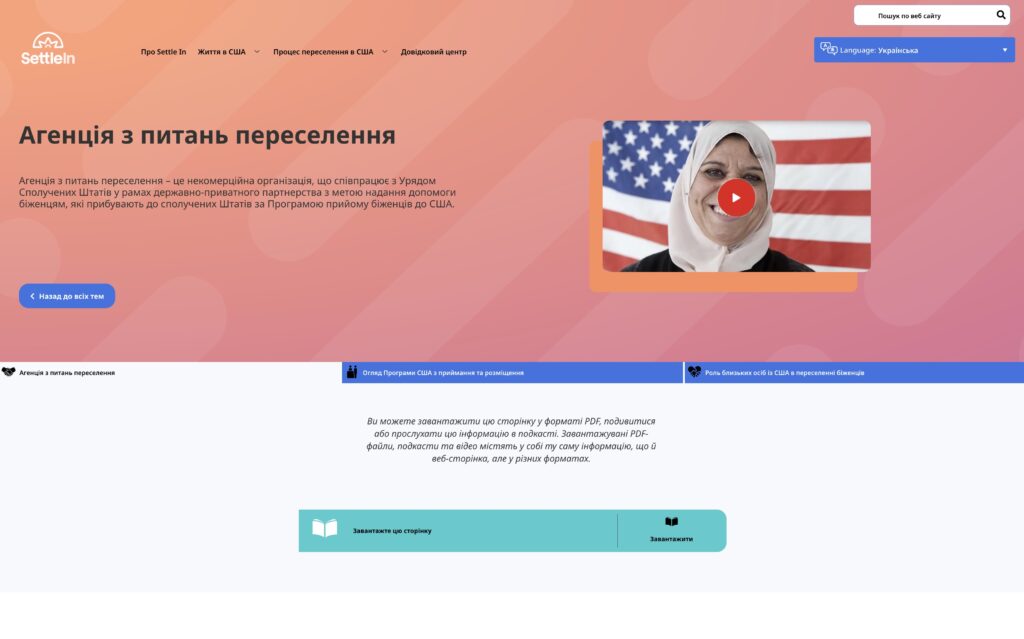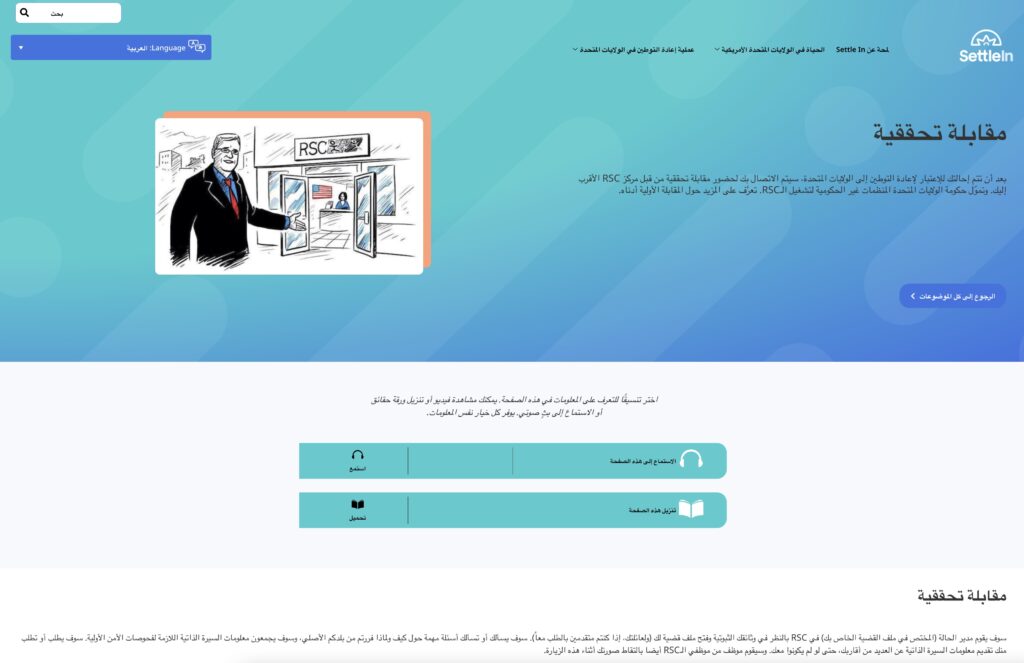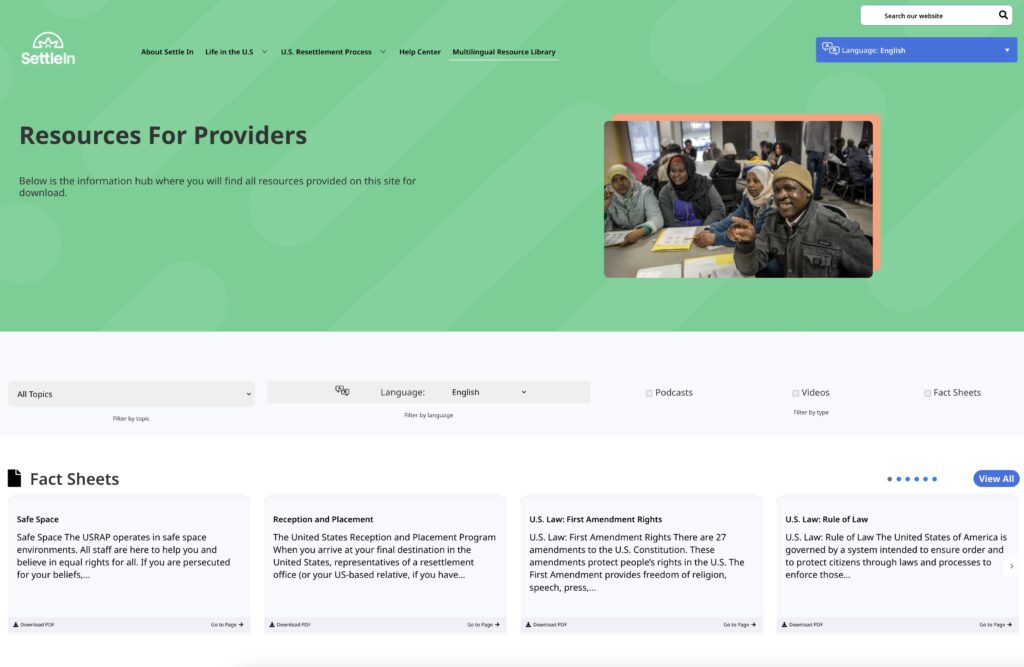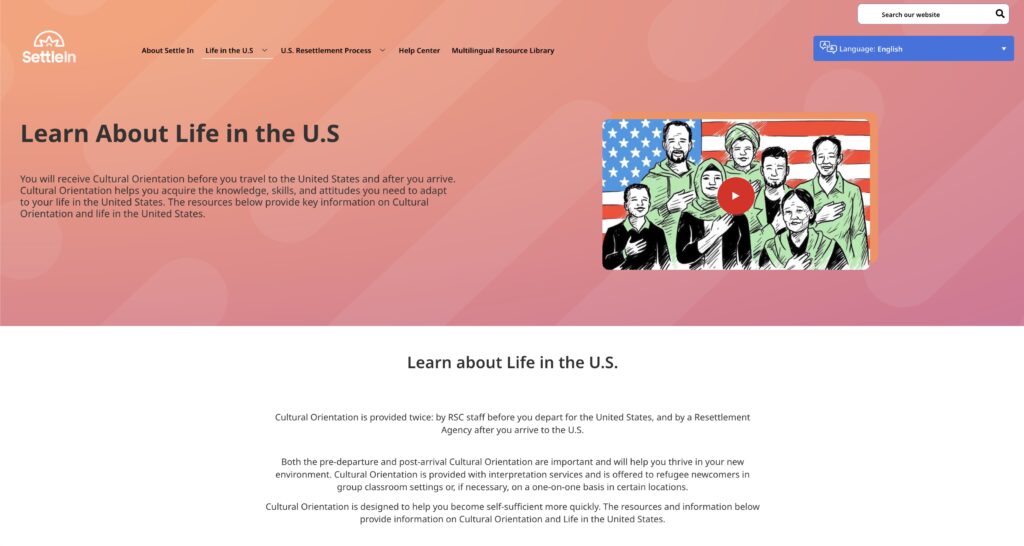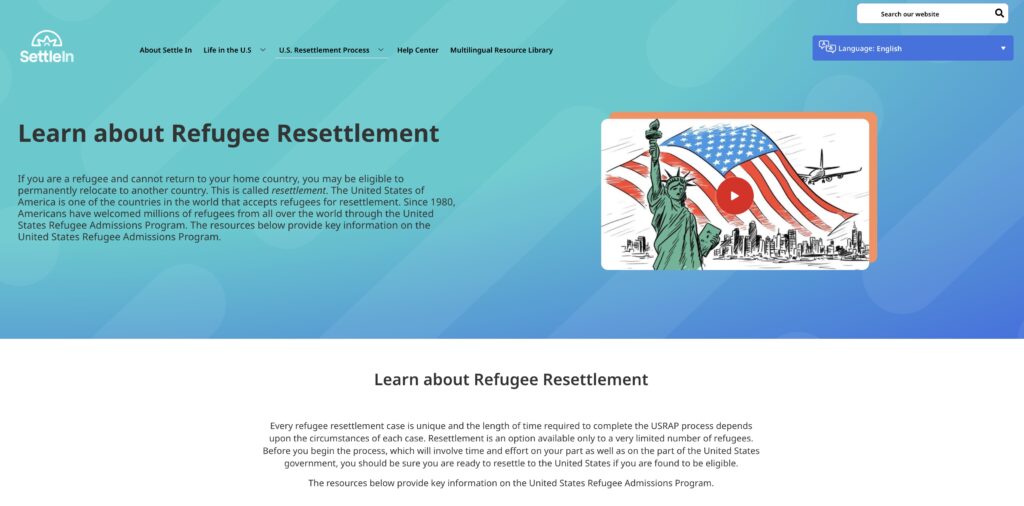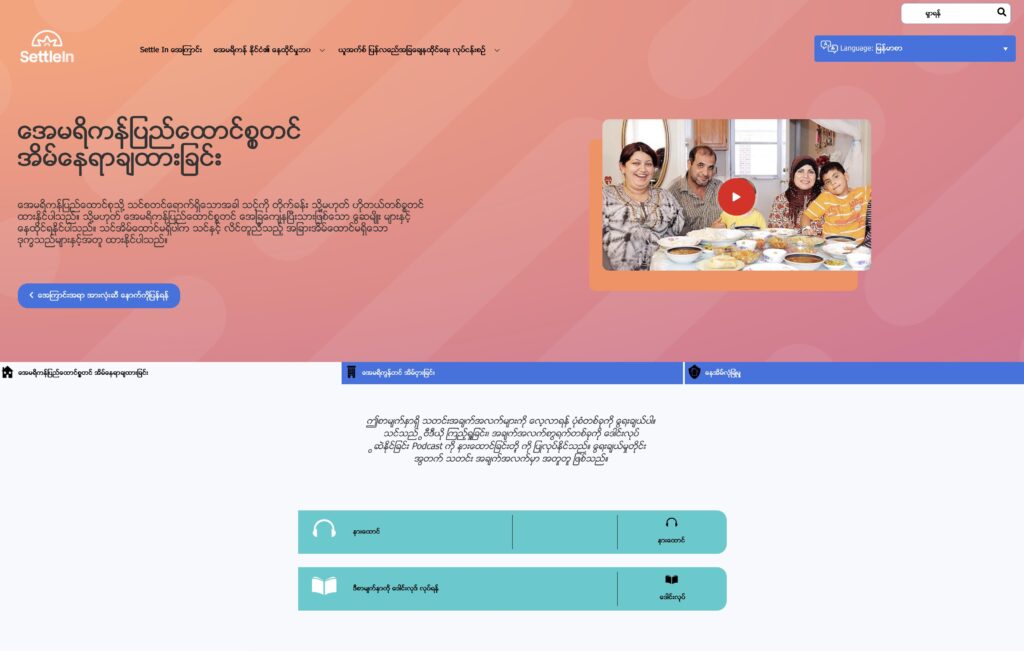Designing for Low Literacy Communities
settleinus.org
The Cultural Orientation Resource Exchange (CORE) connects and supports refugee resettlement staff globally to deliver effective Cultural Orientation to help refugees achieve self-sufficiency in the United States.
Project Overview
- Client Name: International Refugee Committee (IRC)- The Cultural Orientation Resource Exchange (CORE)
- Industry: Non-profit/Humanitarian
- Website Link: https://settleinus.org/
- Staging site Link: https://settleinus.org/
- Objective: Enhance online presence, share new content, and overcome limitations of the existing website.
- Scope: Overhaul outdated website, integrate multimedia elements, make it multilingual, and ensure easy content updates.
The Cultural Orientation Resource Exchange (CORE) approached us with a website that had outgrown its capacity, severely limiting their ability to effectively share new content. The existing site, plagued with numerous bugs, was static, rendering the client unable to make any adjustments. Faced with these challenges, IRC sought a comprehensive solution to not only address the technical issues but also to incorporate multimedia elements and transform the platform into a multilingual hub.
The Challenge
Designing a website for low literacy and refugee/immigrant communities poses several unique challenges that demand a thoughtful and inclusive approach. The foremost challenge revolves around language diversity and literacy levels within these communities.
Striking a balance between textual information and visual elements becomes crucial to effectively convey messages to individuals with varying language proficiencies.
Cultural nuances and sensitivities must also be carefully considered to ensure that the content is relatable and respectful.
Navigational simplicity is paramount, as users with limited digital literacy may struggle with complex interfaces.
Moreover, addressing the diverse technological landscapes of refugee communities, including varying internet connectivity and device preferences, requires a design that is both responsive and bandwidth-efficient.
Continuous user engagement and feedback are essential throughout the design process to refine and optimize the website based on the real-world experiences and needs of the intended users.
Successfully navigating these challenges results in a website that not only accommodates low literacy levels but also empowers refugee and immigrant communities by providing accessible, culturally sensitive, and user-friendly digital experiences.
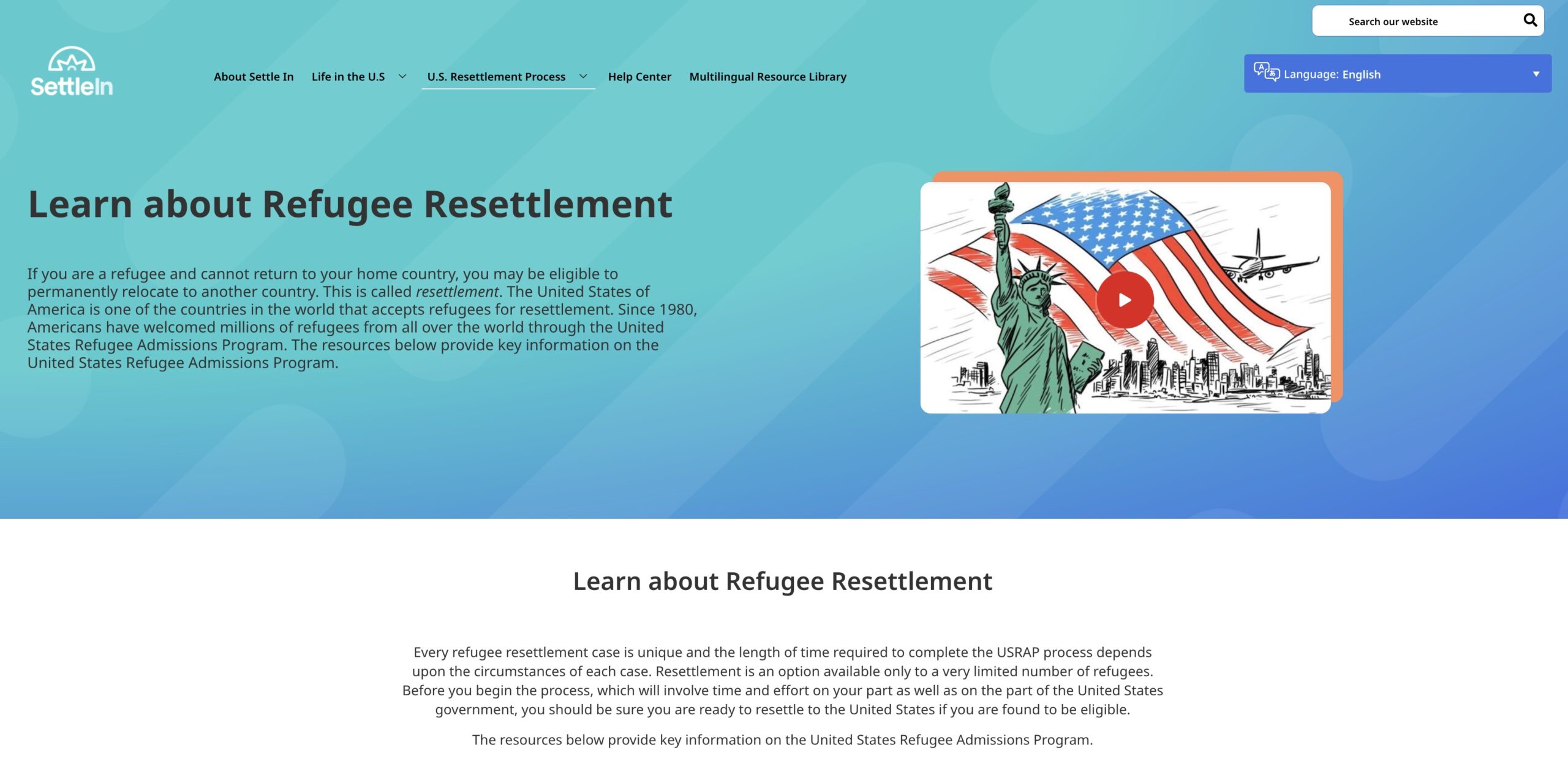

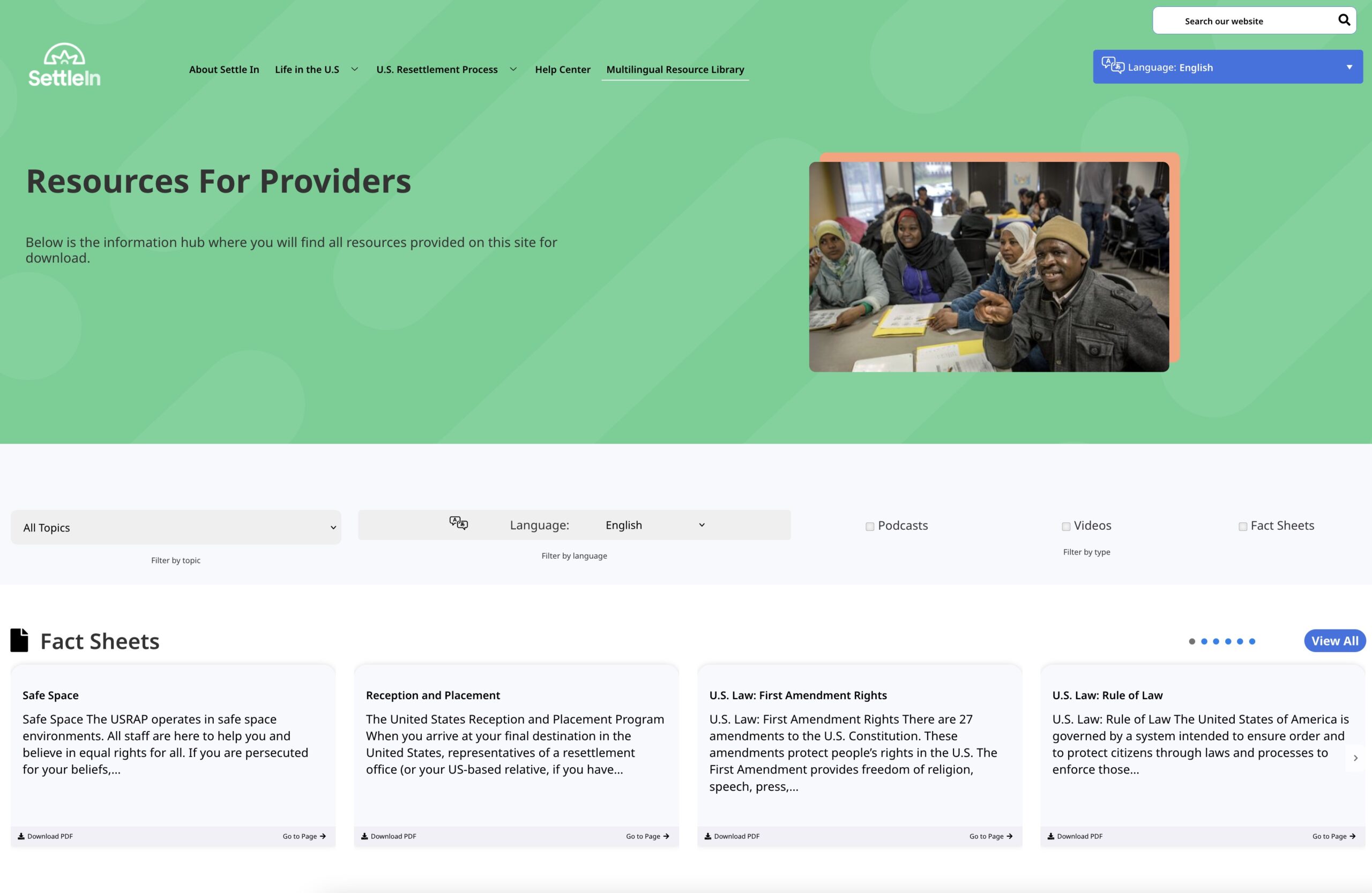
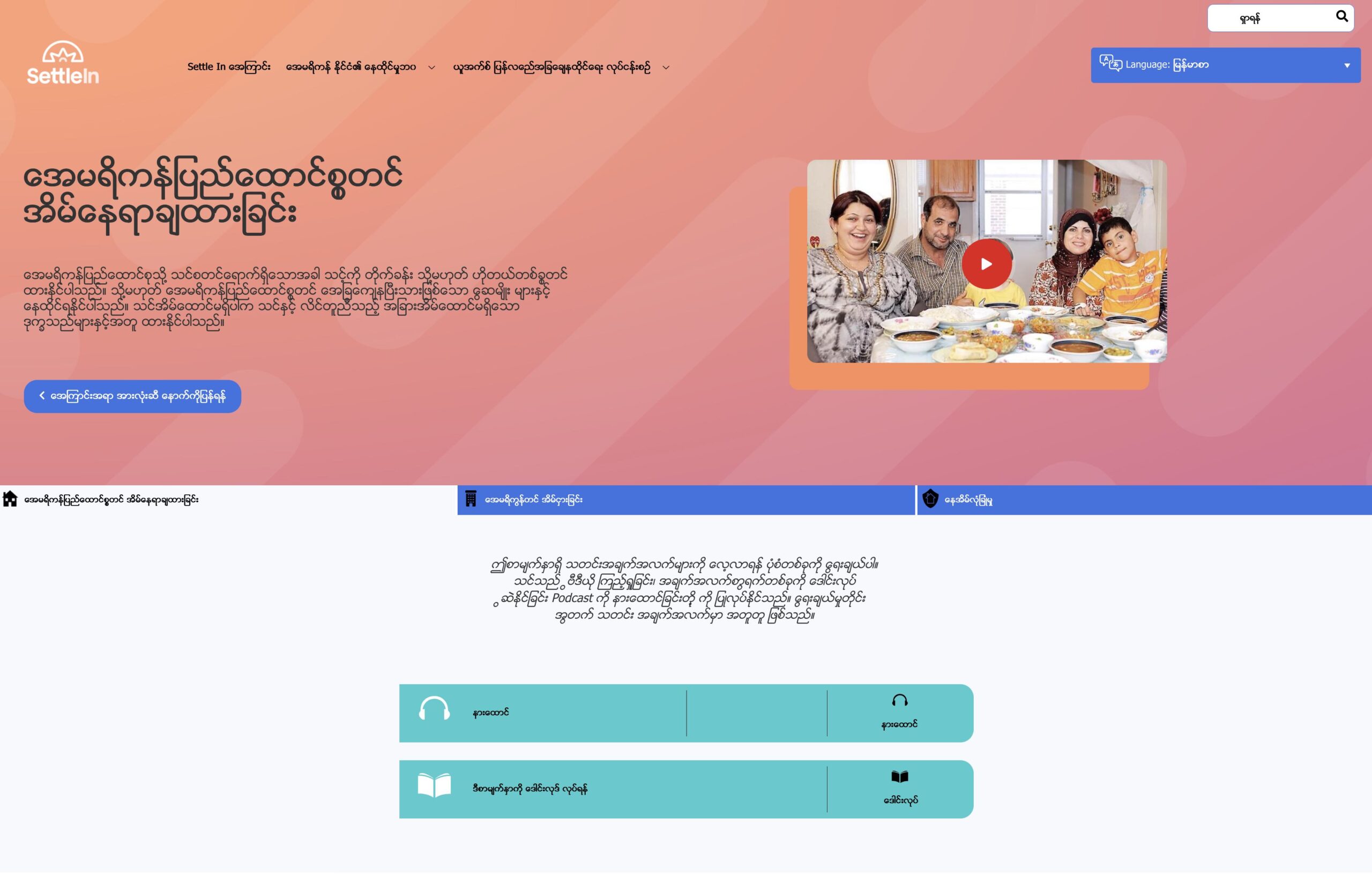
BRINGING IT TOGETHER
Our Approach
Tackling the challenge of designing a website for low literacy and refugee communities required a multifaceted strategy that prioritized inclusivity and accessibility.
User Persona Development: Firstly, we conducted user research to create detailed user personas representing IRC’s target audience. This helped in tailoring the design to meet the specific needs and preferences of users.
Visual-First Approach: We adopted a visual-first approach, minimizing text and utilizing universally understood symbols, icons, and images to convey information effectively.
Straightforward Navigation: Implementing a straightforward navigation system was crucial to ensure ease of use for individuals with limited literacy skills.
Multilingual Design: Embracing a multilingual design, we provided content in various languages relevant to the refugee communities, recognizing the diversity of languages spoken.
Content Assessment: Collaborated with IRC -CORE to assess the multimedia content they wanted to showcase. This included images, videos, infographics, and other visual elements that would enhance the user experience.
Optimization for Connectivity: To address potential connectivity issues, we optimized the website for performance on low-bandwidth networks and prioritized mobile responsiveness to accommodate the common use of smartphones.
Incorporation of Audio and Interactive Elements: Additionally, we incorporated audio features and interactive elements to offer alternative means of comprehension.
User Testing and Iterative Improvements: Regular user testing sessions within these communities allowed us to gather valuable feedback and make iterative improvements, ensuring the final design truly met the unique needs of low literacy and refugee users.
Zendesk Integration for Help Center: We incorporated Zendesk for the help center to enhance user support and assistance and utilized Zendesk’s robust features for efficient ticketing, live chat, and community forums.
By adopting this comprehensive approach, our web design aimed to bridge communication gaps and enhance accessibility for these communities, fostering a more inclusive online experience.
SUCCESS!
Conclusion
The Settlein.org redesign not only addressed the client’s challenges but also elevated IRC’s online presence. The incorporation of multimedia, multilingual support, and an easy-to-update platform has positioned Settlein.org as a powerful tool for disseminating information and connecting with a global audience.
